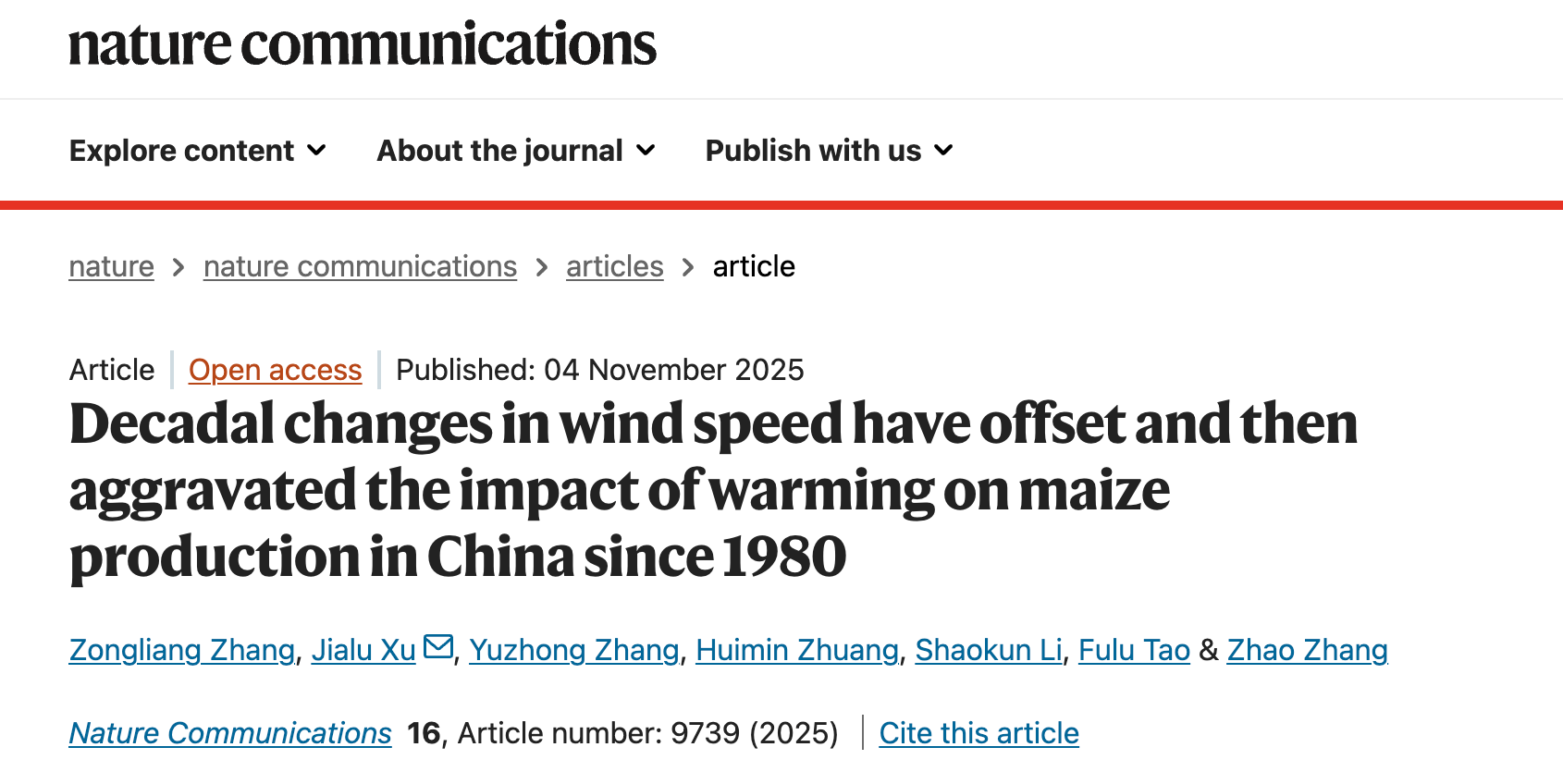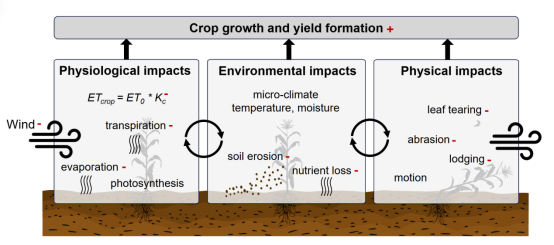The Team Led by Associate Professor Xu Jialu from the School of National Safety and Emergency Management Published an Article in Nature Communications
On November 5, the research team led by Associate Professor Xu Jialu from the School of National Safety and Emergency Management published a study titled "Decadal Changes in Wind Speed Have Offset and Then Aggravated the Impact of Warming on Maize Production in China Since 1980" in Nature Communications.

Briefly, they build an ensemble of statistical models across multiple spatial scales to establish the relationship between growing-season wind speed and maize yield. They then estimate the cumulative impact of wind changes in recent decades on China’s maize production and contrast it with the impact of warming temperatures. Finally, they compare the observation-derived wind-yield relationship with simulations by crop models. Their findings suggest that wind is an underappreciated element of climate change that affects crop production.

Abstact:
Wind is a critical meteorological factor for crop production, yet the effect of its long-term changes on crop yield has not been adequately discussed. Here, we assess the effect of wind on maize yield and production in China with statistical modeling of weather and crop data for 1980−2017. The analysis, applied in different regions and scales, consistently reveals that maize yield increases by ~9.4% for every 1 m·s−1 decrease in growing-season wind speed anomaly after controlling for temperature and precipitation. Three decades of decreasing wind speed between 1980 and 2010 have enhanced China’s maize production by 101.2 Mt, fully offsetting the loss due to warming temperatures. However, this compensatory effect has rapidly diminished in the last decade due to the reversal of wind trends, with expanding areas experiencing both increasing wind speeds and warming temperatures. The wind effect is substantially underestimated by crop models, exposing gaps in our current evaluation of climate risks to food security.
Reference:https://www.nature.com/articles/s41467-025-64725-z


